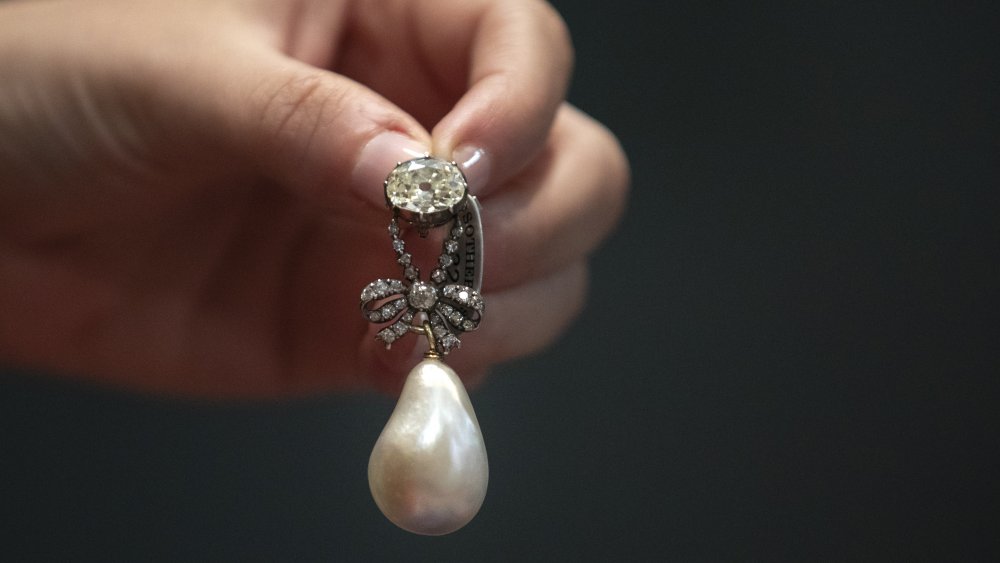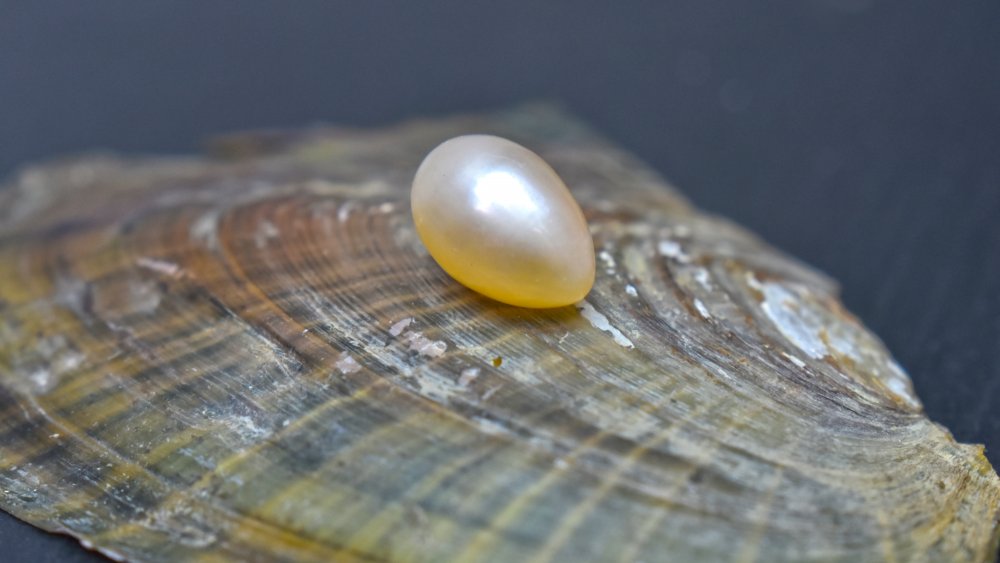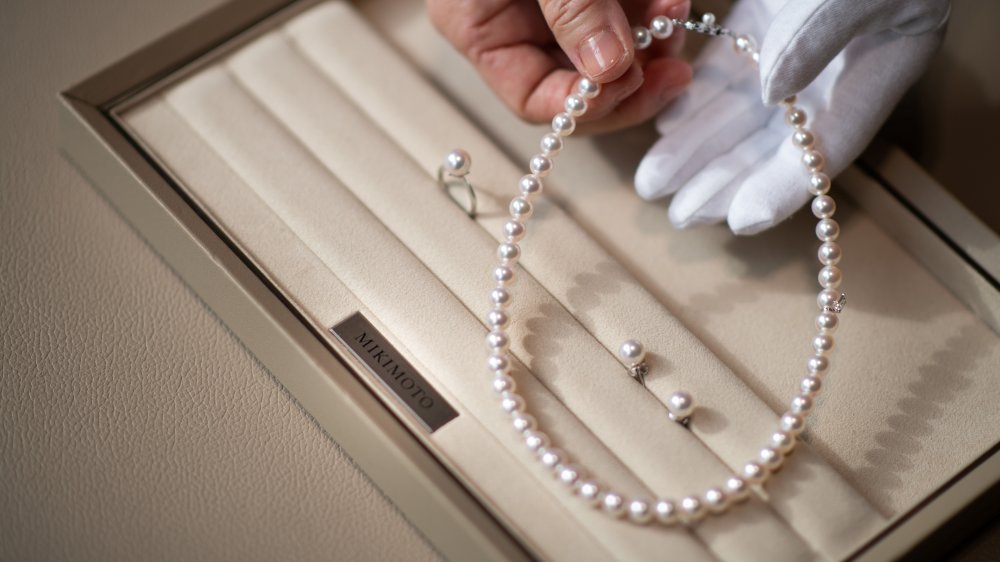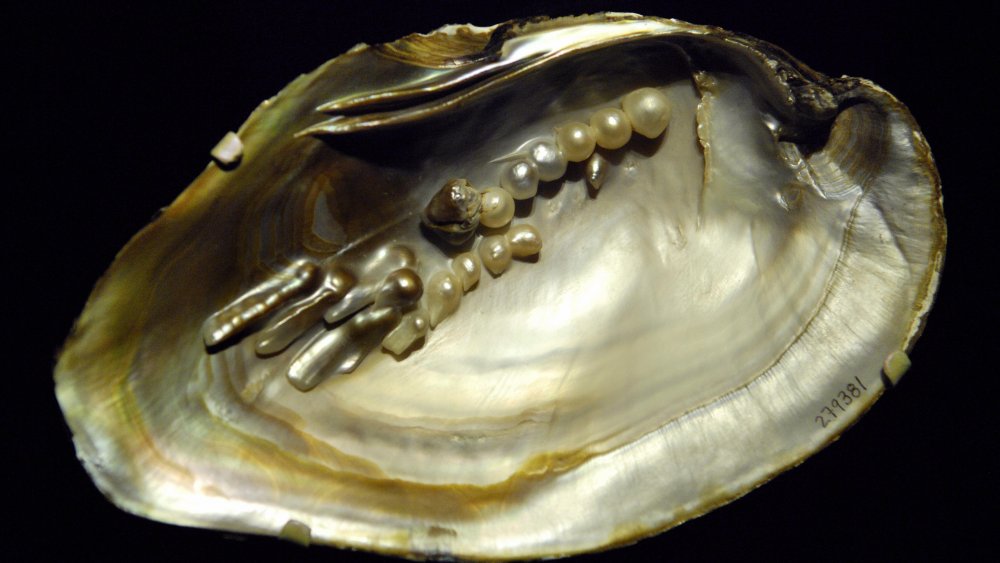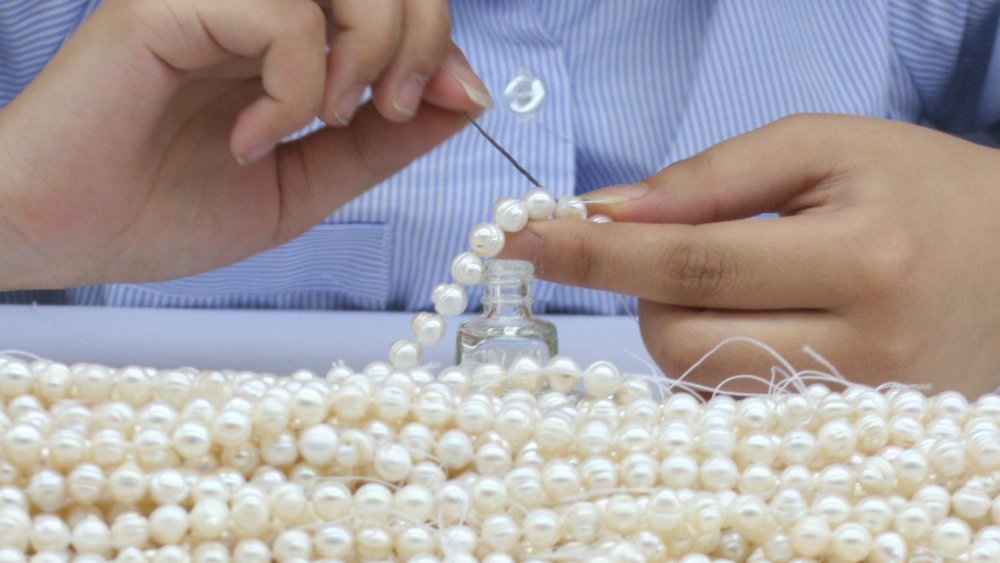Why Are Pearls So Expensive?
In 2018, a Sotheby's auction in Geneva set a jewelry record by selling the most expensive pearl pendant in history. The pendant, set with diamonds, belonged to Queen Marie Antoinette, who is known today for the extravagant lifestyle she led in the run-up to the French Revolution. One reason for the pendant's eye-watering $32 million price tag is because the item had such historical value. "The Marie Antoinette pendant is simply irreplaceable," jeweler Eddie LeVian tells The Guardian. "This is about far more than the gems themselves: Marie Antoinette's jewellery is inextricably linked to the cause of the French Revolution."
The Financial Times says pearls have the longest history of any jewelry; women of the Roman Empire were supposedly enamored with natural pearls and they were prized as symbols of beauty, purity, and fertility. They were also cherished because they were difficult to get — David Warren, senior international jewelry director at Christie's, says, "They were the most valuable and prized gem for thousands of years." Ancient people even thought pearls were formed when dewdrops fell into clams.
Why, though, are they so pricey?
How natural pearls are formed
Natural pearls are rare, because they don't really happen organically. Pearls are an oyster or a mollusk's way of dealing with an irritant, which has found its way into its shell (so yes something has to fall into the bivalve). To ensure that it is protected from this irritant, which could be a small organism, the oyster or mussel starts coating the intruder with nacre, which is the same shiny material found on the inside of its shell (this nacre is also known as mother-of-pearl). By throwing on layers of nacre around this irritant, the oyster (or mollusk) creates a pearl (via Business Insider). Of the approximately 20,000 different types of bivalves, only a handful can make pearls (via Pearl Guide).
Natural pearls and cultured pearls are different because of the way the irritant is introduced. A natural pearl is formed when an irritant makes its way into an oyster, while a cultured pearl is made when the irritant is planted into the oyster by a human. Business Insider says the irritant isn't just any old piece of dirt — it is normally a piece of mollusk tissue (also known as donor tissue), so the oyster's defense response is triggered, forcing the mollusk to create a pearl.
How cultured pearls came to be
If you love pearls, you have Kokichi Mikimoto to thank for streamlining the process of creating cultured pearls. In 1893, he created the first cultured pearl, and by the 1920s, his process, which made use of the small Akoya pearls made it possible to create cultured pearls at a commercial level (via Mikimoto).
Today, pearl farmers plant foreign tissue into a mussel then wait between six months to two years until the pearls are formed. Because the process of creating a pearl involves a living organism, no one is entirely sure how a pearl might turn out until it is harvested. And the bigger and shinier the pearls are, the more expensive and valuable they are sure to be.
How do you tell the difference between a natural pearl and a cultured pearl?
Natural pearls that are formed without human intervention are quite rare, and most of the pearls in the market today are cultured. Even trained gemologists can't tell the difference between the two without the help of equipment like an x-ray. "Think about the layers of an onion," Tom Moses, a gemologist at the Gemological Institute of America says. "So a natural pearl would have all of those concentric layers of growth from the very inside out."
A cultured pearl, on the other hand, presents itself in a different way. Business Insider says x-rays will show a cultured pearl as having a large center (the man-made irritant), and a thinner layer of nacre around it.
There is a difference between saltwater and freshwater cultured pearls
Cultured pearls today come from three types of oysters: the Pinctada fucata, which yields the Akoya pearls popularized by luxury firm Mikimoto; the Pinctada maxima, which produces the largest, most lustrous pearls in the industry and are prized by jewelry collectors as South Sea pearls; and the Pinctada margaritifera, which makes the highly prized Tahitian black pearl. All three oysters grow in saltwater, and are, for the most part, usually capable of producing one pearl each. Business Insider says the size of the pearl depends on the size of the mollusk.
By contrast, freshwater pearls are formed in mussels, and are raised in hatcheries. Unlike their oyster cousins, one mollusk can produce several pearls at one time, making freshwater pearls easy to produce and cheap to acquire. As a result, the Gemologist's Institute of America considers freshwater pearls to be the world's biggest bargains.
